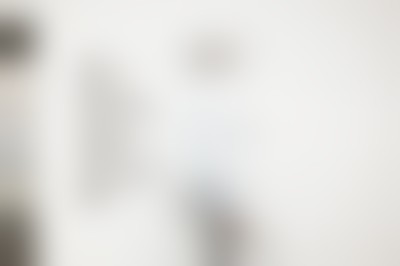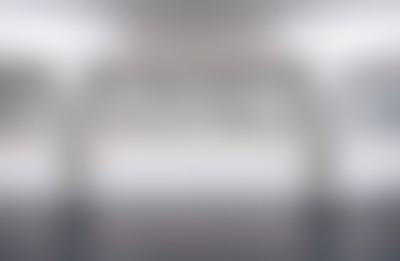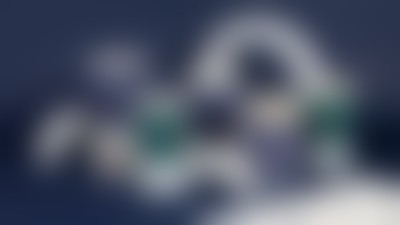Exclusive interview with Andreas Uebele
Andreas Uebele – founder of uebele bureau.
Studied architecture and urban planning at the university of Stuttgart, and art at the Stuttgart state academy of art and design. in 1996, he founded his own visual communications agency in stuttgart, and since 1998 has been a professor for communications design at Düsseldorf university of applied sciences. A member of the type directors club of NY and of the art directors club of NY since 2002.

Photocredits: www.uebele.com
You work a lot with fonts and space. How and when they came into your life?
Letters with letters: fortunately, for a letter you not only need a piece of paper, but also an envelope with your name and address on it - printed, handwritten or painted. So you have the opportunity to send a little bit of yourself, which is especially nice when you're 17 years old and in love. And that's how it started. from loveletters to letterlover.

Photocredits: www.uebele.com

Photocredits: www.uebele.com
In one of your interviews, you said that beauty is a violation of the rules, a kind of disharmony. Illustrate your idea.
Everything perfect is strange. The absence of disturbance is so irritating that you want to add it, give the balance a little nudge. The freshly mown lawn calls for a few wilted leaves that have fallen from the tree. Often we first perceive as beautiful what is familiar to us, familiar patterns and shapes, regularities that we can calculate. The new, the unfamiliar, the strangely alien tends to repel us. And that is precisely what is beautiful! because the new offers us a different perspective and questions the familiar, which may be unpleasant, but it takes us further. it is the unplannable, the unexpected, the irregular and the upside-down that is the true beauty. ‘to turn around’ - in Latin this means ‘revolvere’ and just as in politics or technology, in art and design it is only the upside-down, the revolution that makes true progress possible.

Photocredits: www.uebele.com

Photocredits: www.uebele.com
What is the difference for you between the terms: guidance system and orientation system.
What distinguishes the two terms in German is the way the person is seen in them: a guidance system is very forceful, you think of orders: this way! that way no way! And perhaps even of a leader or a guide who tells you what to do (which we have had very bad experiences with in Germany). An orientation system, on the other hand, I understand as a polite offer. In German, ‘sich orientieren’ is a reflexive verb, the subject in the sentence ‘ich orientiere mich’ is also the object. That means autonomy, it enables independence and demands responsibility for one's own actions. I like that.

Photocredits: www.uebele.com
How do you assess the impact of the rapid digitalization of society? What does this mean for space design?
Whether digital or analogue – first and foremost beautiful!
As a lover of analog books and analog spaces, you encourage designers to pick up a pencil more often. Why?
When drawing by hand, you are constantly correcting what you see, your brain learns: which line fits, which colour disturbs, which hatching helps, what is beautiful and what looks strange? It couldn't be quicker. apart from that, it's good to mix analogue and digital techniques, because unexpected or random things can happen.

How is the identity refracted when moving from square (2D) to space (3D)?
Two-dimensional systems are totally different from three-dimensional ones. the beauty of our work is that we try to do exactly that: create striking two-dimensional abstraction and surface for spaces and with spatial means.
Your top 3 favorite projects with orientation systems and why?
The new, unconventional orientation system for the university of applied sciences in osnabrück with its ceiling lettering, which provided orientation like a starry sky, was a breakthrough for our office; suddenly we were visible.

Photocredits: fachhochschule osnabrueck: andreas körner

Photocredits: fachhochschule osnabrueck: andreas körner
The huge brushstrokes for the German centre for neurodegenerative diseases (DZNE) are a work that is technically demanding, quiet and powerful, poetic and complex at the same time.

Photocredits: deutsches zentrum für neurodegenerative erkrankungen: brigida gonzalez

Photocredits: deutsches zentrum für neurodegenerative erkrankungen: brigida gonzalez
And finally, the orientation system for Serviceplan is another milestone in our work: the 150 meter long and six meter wide carpet of light that connects three buildings is made from a specially designed font. the combination of artwork and information design shapes the identity of this place.

Photocredits: serviceplan house of communication: mark seelen, prof. andreas uebele: joachim baldauf

Photocredits: serviceplan house of communication: mark seelen, prof. andreas uebele: joachim baldauf

Photocredits: serviceplan house of communication: mark seelen, prof. andreas uebele: joachim baldauf
How do you interact with architectural bureaus? Do you develop the concept of graphic content in parallel with the architectural project or when the project is almost ready? Can the concept of graphics influence the development of the interior concept?
We are usually called in when the architectural design has already been finalized. But that doesn't matter, because the architects can react to our work in the implementation planning. some offices want us to do exactly that: to help shape and influence the atmosphere, the interior design and see our work as an enrichment and extension of their work.
Tell a few words about the structure of your agency: who works with you and how many projects do you approximately do per year?
On average, we work on around 40 projects at the same time, some of which last several years. we are a team of twelve communication designers and a secretary. There is the managing partner Carolin Himmel and the office manager Simon Renner. A project manager is responsible for each project. we work on everything together in meetings of two or three and look for the best solution together. But others are also involved in this process: the suppliers and manufacturers who work with us on product development at an early stage, the clients with their wishes, employees and interns with their commitment, users with their criticism, as well as external partners such as the philosopher Hannes Böhringer or the author Miriam Holzapfel, who develop text and language concepts for the poetic level of our projects.

What is the philosophy of büro uebele? How is it reflected in the works?
Good work requires an attitude and clear positions: wanting the best, not giving in, doing the right thing, seeking beauty and fighting for it with courage.
Your bureau works a lot with public spaces. Do you have any beliefs about environmental friendliness and the common good behind this?
It's nicer when your own work has social relevance and doesn't just fulfill your own needs or the expectations of the design industry. that's why we make sure that our work is meaningful in two ways: firstly, that it is useful and works, i.e. that it improves an existing situation. And secondly, that it is beautiful. Because that is our task: to plant beauty in a world that is in many ways terrible. We have long attached great importance to sustainable production and construction.

Photocredits: www.uebele.com

Photocredits: www.uebele.com
Your agency has been awarded 350 international awards. How has your attitude towards fame changed (or not changed) over the course of your life?
Visibility is part of our profession and i have respect for all colleagues who manage it well. However, you can also achieve fame with questionable methods or with skillful pr alone, so visibility aka fame is only interesting to me when our office has been recognized for good work. otherwise not.

Photocredits: www.uebele.com
Your bureau had several government projects. Tell us about the eagle for the Bundestag.
I am still delighted that we won the competition for the German federal parliament and were able to design the trademark for the highest democratically elected body, the German Bundestag. it was a courageous decision to deliberately ignore the briefing and propose a solution that was forbidden in the tender for legal reasons. however, nothing else seemed sensible to us. the figurative mark we designed, the federal parliament eagle, did not exist before. However, there was a relief-like work of art in a similar form in the plenary hall of the former federal capital in Bonn - today it hangs, slightly modified, as a work of art in the plenary hall of the German Bundestag in Berlin. our proposal to significantly rework this world-famous symbol of the bonn republic, of post-war democratic Germany, and to use it for the Bundestag, convinced the jury - after all, the eagle was not discredited as a state symbol in Germany, the nazis used the swastika. so it was possible to make something out of it.

Photocredits: www.uebele.com

Photocredits: www.uebele.com
You teach at the University of Dusseldorf. Does it help you stay on top of trends and do you invite interns to your office?
Haha, on top of trends? Students get input from their teachers - at least that's how it should be and not the other way round. The fact that you get to know how young people think is a welcome side effect, of course, but it's not the point. And teaching is not about bringing the best students into the office as interns, which of course we have done. Some of our long-term employees have come to us in this way, which is fortunate.
Would you be interested in working for a non-European market?
We enjoy working wherever there are interesting projects.
There are a lot of photos of your vineyard on your Instagram. Tell us about your passion for winemaking.
Haha omg sigh that was a crazy idea - I had no idea about winemaking! But as i said before: the known is a bit boring, the unknown is beautiful! that doesn't just apply to design, but to life as a whole. In the meantime, the vineyard thing has become really great: my wife and i are constantly learning, we work hard, we stand by the vines and marvel at everything you can know about them. our neighbour is an organic winegrower and helps us make wine and distill schnapps. It's all a great combination of culture, nature and craftsmanship. But the most important thing is finally being able to design wine labels. That's all i need.



